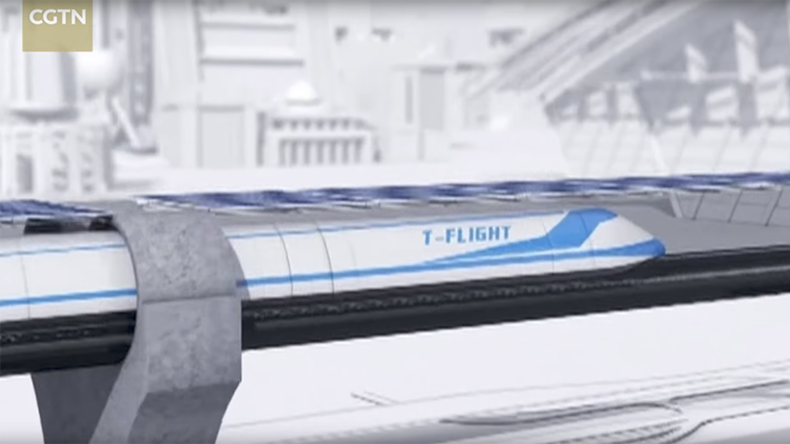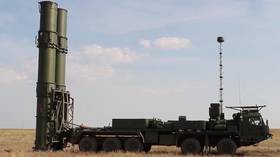Hyperloop 2.0? Chinese company proposes 4,000kph ‘flying train’

China Aerospace Science and Industry Corporation (CASIC), the main contractor for the country’s space program, announced that it hoped to shatter Elon Musk’s Hyperloop dream with some terrifyingly fast competition.
At the Commercial Aerospace Forum held in Wuhan Wednesday, CASIC claimed it had begun research and development on a new type of supersonic transport involving "near-ground flight," similar to SpaceX's Hyperloop project. There is one catch, however: the final phase of CASIC’s proposal would produce trains that travel at a staggering 4,000kph.
The company proposes a three-stage plan in which their "flying trains" would first operate an intercity network achieving maximum speeds of up to 1,000kph.
All going to plan, in the second phase the flying pods would aim to double this travelling speed reaching 2,000kph.
Imagine boarding a train in Beijing and half an hour later you are at a meeting in Wuhan, some 1,100 km away https://t.co/FxNI6OIKxApic.twitter.com/fXBFc4alX9
— China Xinhua News (@XHNews) August 30, 2017
In the third and final stage, CASIC has set itself the lofty target of achieving speeds of up to 4,000kph, or five times that of commercial airliners.
For reference, the top speed recorded by the Concorde supersonic passenger jet before it was retired due to safety concerns in 2003 was 2,179kph or Mach 2.04, over twice the speed of sound.
TEN times faster! China to develop HyperFlight transport network with speeds up to 4,000 km per hour https://t.co/JkLNzu30Jwpic.twitter.com/VTjEoskkcI
— China Xinhua News (@XHNews) August 30, 2017
Rivals HTT and Elon Musk’s Hyperloop One have set the more realistic target of transport systems that reach approximately 1,000kph.
All three contenders to the supersonic replacement for the steam engine involve travelling through low vacuum environments floating atop magnetic suspension systems similar to the Shinkansen bullet trains in Japan.
CASIC claims their proposed supersonic trains differ from other similar systems, as they will float even when stationary, using newly developed technological breakthroughs.
"It is the same as taking a plane. We may feel a little uncomfortable when the plane is speeding up, but not during the flight. How our body reacts depends on acceleration, not the speed itself," said Mao Kai, technical director of the project, as cited by Xinhua.
#ICYMI Chinese company plans hyperloop traveling at 1,000 kmh https://t.co/sxF3jpJYmLpic.twitter.com/r8E6b8qpfG
— CGTN (@CGTNOfficial) August 30, 2017
Mao also claimed that the HyperFlight system would accelerate and decelerate at G-forces that humans could easily tolerate, Xinhua reports.
Only time will tell whether the Chinese competitor can back up its extremely ambitious claims but, as anticipated, no one can wait to find out.












